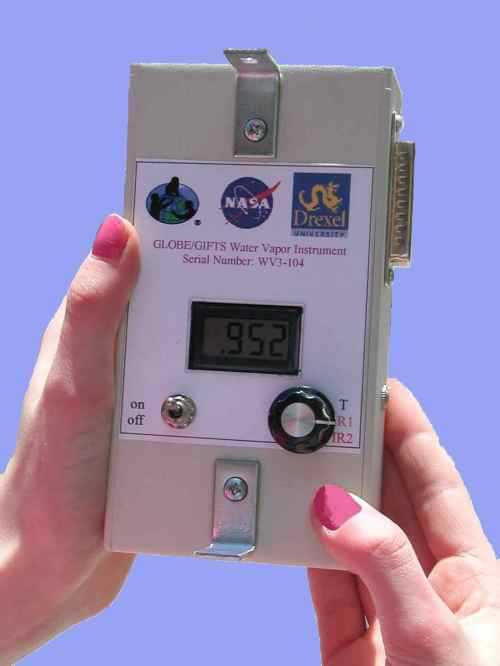

Measuring Atmospheric Water Vapor

- Water Vapor data from Ramey School, Aguadila, Puerto Rico
- Water Vapor Protocol
(Spring 2003 GLOBE version)
- Water Vapor Data Sheet (Spring 2003 GLOBE version)
-
Online version of NASA Educators Guide:
Brooks, David R., Mims, Forrest M. III, Arlene S. Levine, Dwayne Hinton. The GLOBE/GIFTS
Water Vapor Monitoring Project: An Educator's Guide with Activities in Earth Sciences.
NASA EG-2003-12-06-LARC, 2003.
- E-mail data entry format for reporting water vapor data
- Calculating precipitable water (PW) from dewpoint temperature,
as discussed in the Water Vapor Protocol.
-
Calculate dewpoint temperature from air temperature and relative humidity.
- Calculate precipitable water vapor (PW) based on your
measurements with a GLOBE/NASA
water vapor sun photometer
- Participate in the GLOBE water vapor instrument calibration project
- Here is an introduction by the American Geophysical Union to the relationship between atmospheric water vapor
and Earth's climate: Water Vapor in the Climate System,
Special Report, December 1995.
The two-channel water vapor instrument shown here is physically identical to the two-channel visible light sun photometer for
measuring aerosol optical thickness. It uses two near-IR detectors instead of the LEDs used in the visible-light version.
Protocols for using this instrument were written for the GLOBE program in the mid-1990's. However, the GLOBE program no longer
actively supports this protocol. IESRE currently has no independent source of data for calibrating these instruments.
If you are near a NOAA GPS-MET or NASA AERONET site, you can calibrate them yourself. (See the link to "Participate in the
GLOBE water vapor instrument calibration project." Even though this is no longer a GLOBE project, the procedure remains
the same.) These instruments can be purchased
from IESRE, aligned but not calibrated, for $180.


